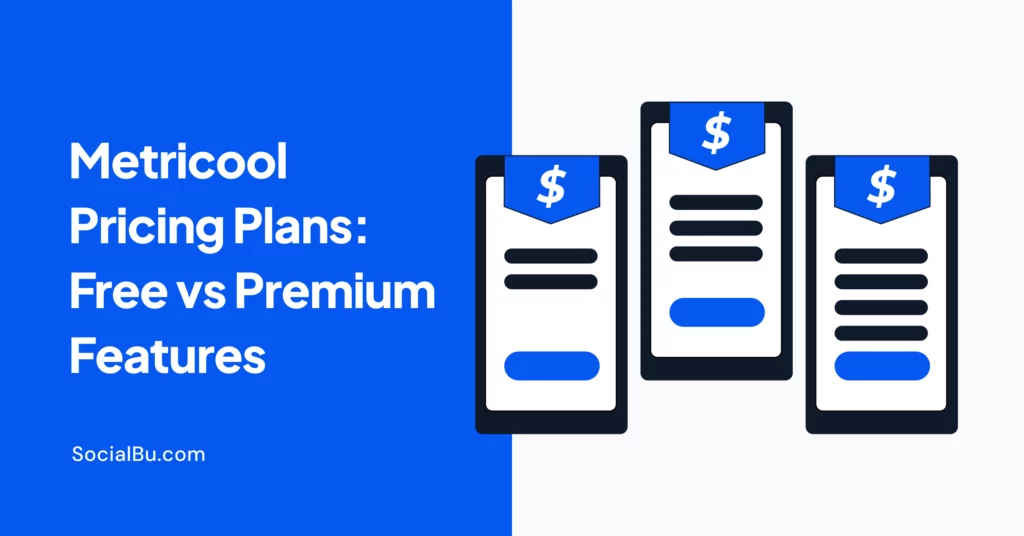“Time is the scarcest resource and until it is managed nothing else can be managed ” — Peter Drucker
Without a doubt, Social media has transformed the way small businesses market to their target audiences and interact with customers. Therefore, social media presence is a must for every modern small business. But it can also be one of the most time-consuming and resource-draining marketing strategies too.
As we all know, “Nothing in the business is so valuable as time.“
Luckily, there are some things that every small business owner can do to save some time and become more productive in managing time online. All it takes is some organization, a dash of creativity, and few useful social media tools.
1. Focus and strategize
One of the biggest mistakes you can do on social media is when you operate without any focus and strategy. You cannot expect success on social media without a good plan. If you don’t know which path to use in order to get to a certain destination, you will probably get lost. So, carry out your social media activities with a plan. There are hundreds of ways to use social media for business. But not every strategy will fit your business goals. Step back, analyze your marketing plan, and pick couple of ways that social media can fit into that plan.
For example, let’s say one of your marketing goals this year is to grow your email list. If so, then you might want the Facebook “call to action” button of your Facebook Page’s cover image to get people over to your email sign-up page OR you can also use the experience of other successful small business owners that have thousands of followers and/or fans on social media platforms. Once you have the right plan, stick to it.
2. Choose the right platform
Social media has become complex. Each social platform has more features and the learning curve is steeper. Don’t try to master every social network at once. Pick just one social network and get that platform up and running before you jump to the next. Focus on the platforms your customers spend the most time on or that fit your industry. Drop any networks that are not producing results for you.
3. Batch your tasks
According to scientific research, it takes “up to 30 minutes to return your attention to whatever you were doing before an interruption.”
Jumping in and out of social media sites all day is a time-draining approach. To organize your work, when you batch content and social media posts, it’s much easier to manage your time productively.
An example of batching might be scheduling your tweets and Facebook updates at the beginning of the day. Then later in the day check all your social channels in one 15-minute block of time, to see what your followers are posting and respond to any comments and messages.
4. Schedule updates in advance
With automation, you can schedule updates days or weeks in advance i.e seasonal activity, industry events, holidays, etc. Make time for social media and map out several days’ worth of updates/tweets in a single sitting and organize activities into a social media calendar.
Every morning, simply pick a pre-written post from your calendar and plug it into a scheduling tool like SocialBu and you’re good to go.
5. Hire a social media enthusiast
Always look to delegate to a staffer who just loves social media or hire an intern that is passionate about his work (other qualifications being equal). Does he/she have an active Twitter, Facebook, or LinkedIn account? Do you sense the excitement?
Someone enthusiastic about social media won’t give you a lot of headaches and at the same time won’t need a long learning curve.
6. Outsource tasks
There are many professionals that can take care of certain elements of your social media campaigns. Some of them can manage your accounts while others are specialized in social media marketing. Outsourcing to an outside agency or contractor may save you time. But opting to an outsourcing strategy can be costly.
Before outsourcing, do some online research and look for experienced, reliable, and professional service providers. Because remember, too, the more inexperienced the provider is, the more hand-holding you will have to do.
7. Use automation for activity
Automation is the process of setting up systems to work whether you’re around or not. A simple example is to use a tool that automates message replies to repetitive questions.
Good marketers have their pick of apps that can post for them according to a schedule they define. This doesn’t mean you should completely automate everything. Someone in your business still needs to engage personally. You will still have to post manually to get involved in conversations with prospects or influencers, but everyday greetings and non-industry musings can be written in advance for later use. But by automating your activities, you can save considerable amount of time and can serve that time for engagement.
There are many tools — check out Socialbu or IFTTT.
8. Utilize social media Analytics
Before designing a social media strategy, you need all kinds of relevant information. How do you know how many people are seeing your posts and engaging if you don’t look at the numbers! Make decisions based on data!
For example, If your goal is to expand and engage with followers while driving them to the site, then you can watch post engagement (based on audience size) and URL clicks when managing social media.

Luckily, there are vast number of social media metrics available that can offer you useful insights. You can also utilize weekly reports from Google Analytics in this regard — just set up Google Analytics to send you and others on your team a report showing which social platforms are sending traffic to your website. Then you don’t have to remember to visit Google Analytics and manually run a report periodically.
9. Know your ideal time for posting
I would divide this advice in two aspects. First of all, you should select a period of the day when you are least busy. Use this period of time to create a few interesting posts. You don’t have to share them right away — you can use the social media tools for automation.
The second aspect is to know when to post these status updates. Think about your target audience — post when the maximum numbers of your followers are active on social media i.e at night or in the morning?
Your mileage may vary from others, depending on your industry and audience. Here, the use of social analytics and tools like Google Analytics can help you narrow down when your business gets the most engagement and traffic from social media. But always remember the basic objective is to get better exposure.
10. Strike a balance
A lot of times, people don’t understand the right frequency of sharing their posts on social media. It’s better to post more to social media than less. That’s because the more times your followers hear from you, the more you stay top of mind. So stick with it. And do it regularly, without long breaks in between updates.
But remember access of anything is harmful. Your efforts will backfire if you overdo it. Remember, the more you post, the less engagement you may get on each update. Also, you want to avoid being branded a spammer by followers tired of getting self-promoting posts from you every 20 minutes. So stay consistent and persistent but find that ideal balance.
11. Follow trending Hashtags
For those who you who use social media to keep yourselves updated on the latest developments in your industry or field of interest, set up a list of popular hashtags to search on in your platforms of choice. Use hashtags to quickly identify real-time opportunities for engagement in news and events, identify current trends and key influencers.
Tools like Twitonomy, Hashtagify.me can help you in finding of tending hashtags. Initially, the concept of Hashtags was started on Twitter, but now other platforms also use them.
12. Uncheck the boxes for minor notifications.
Do you really need an email each time someone new is following you on Twitter? I agree, email notifications can be extremely valuable, but getting too many can irritate you. Remember, It’s in the financial interests of social media platforms to send you notifications for every little thing and force you to visit their site multiple times a day.
So halt all the minor email notifications. Go into your settings on each social media platform. Uncheck the boxes for most email notifications. Instead, utilize social media analytics — you can better monitor most activity via periodic reports.
13. Welcome third party content
Great social media marketing revolves around great content. How the hell do you come up with enough content to populate these platforms? How are you going to find the time?!!
The answer, my friend, lies in third party content. Third party content is simply content that has been created by other people. Sharing third party content makes you a more valuable source of information.
To use it effectively, you need to think like your ideal follower. Consider their interests. What would they find interesting, appealing or useful? Any content (be it yours or third party) should always be relevant to you, your brand. If you do it right, it will save you time and massively enhance your presence and branding.
Follow these time-saving tips to create more time in your bushiness. It’s these small changes that can bring a huge impact on the success of your social media marketing. There is nothing complex, all you need to do is, put some data, strategy and tools behind your efforts!
And don’t forget,
“When you save an hour of work you not only save time for your business, but you also save time for things you want to do.” — Nancy Gaines (business productivity expert).






